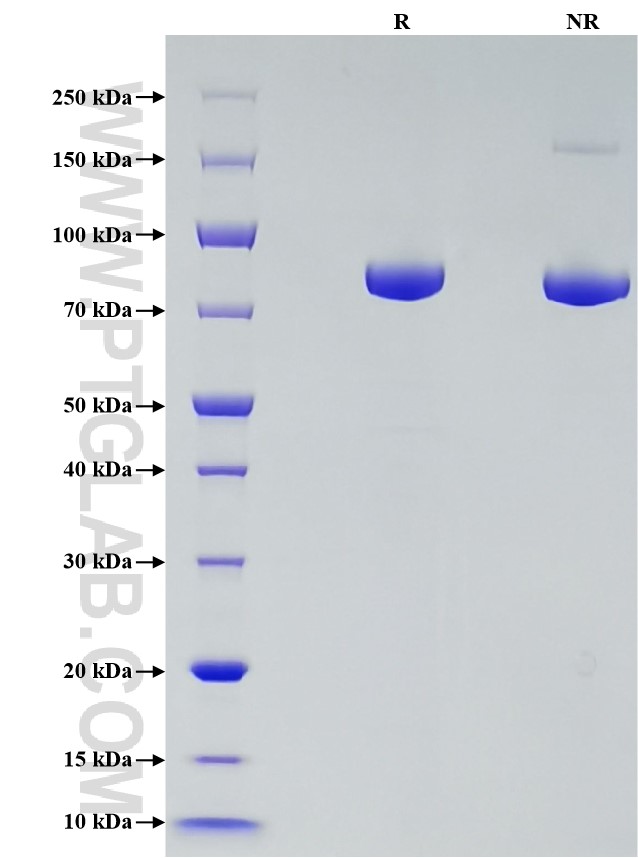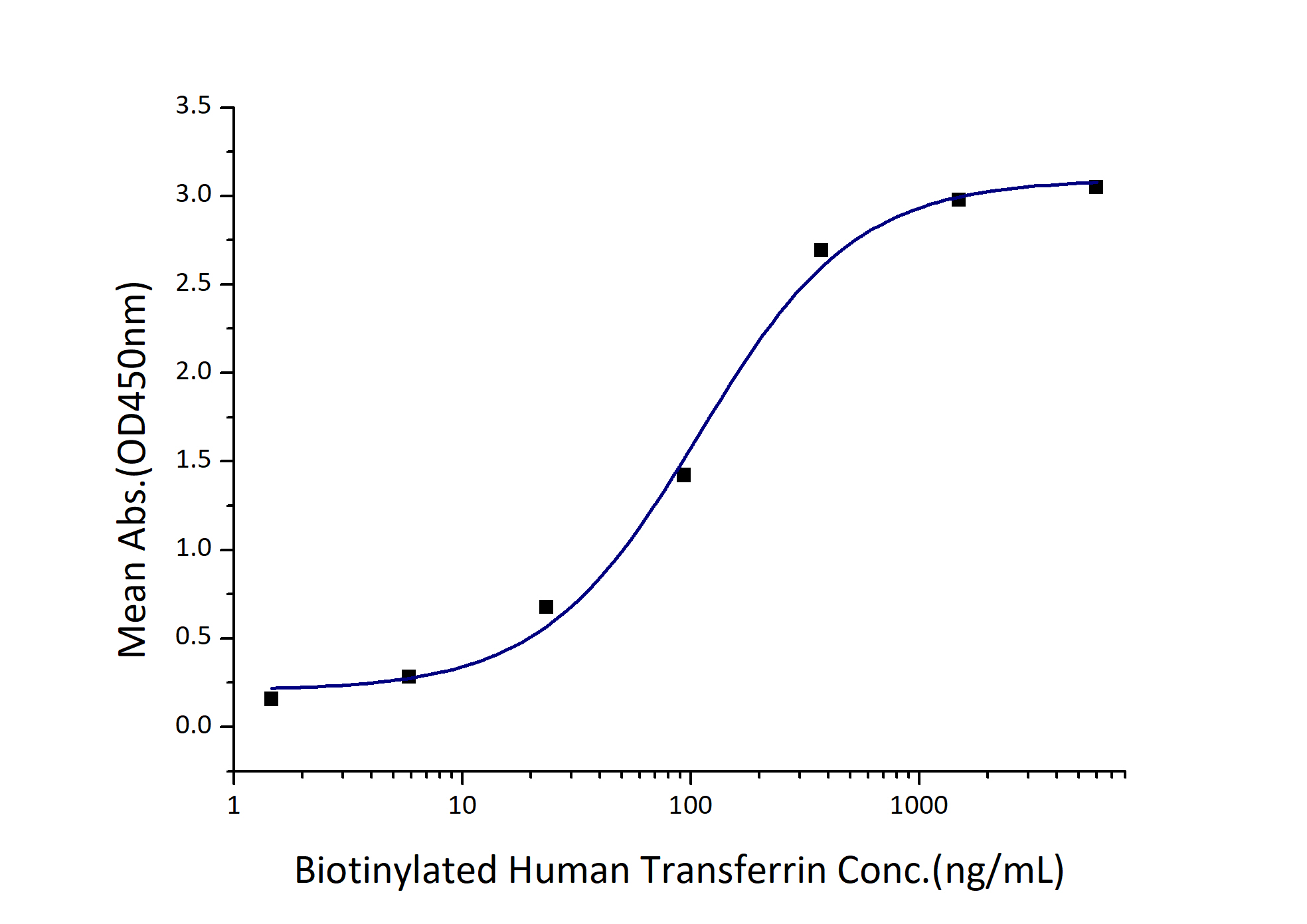Recombinant Human Transferrin R/CD71 protein (His Tag)
种属
Human
纯度
>95 %, SDS-PAGE
标签
His Tag
生物活性
EC50: 54-216 ng/mL
验证数据展示
产品信息
| 纯度 | >95 %, SDS-PAGE |
| 内毒素 | <0.1 EU/μg protein, LAL method |
| 生物活性 | Immobilized Human Transferrin R (His tag) at 0.5 μg/mL (100 μL/well) can bind Biotinylated Human Transferrin (Myc tag, His tag) with a linear range of 54-216 ng/mL. |
| 来源 | HEK293-derived Human Transferrin R protein Cys89-Phe760 (Accession# CAA25527) with a His tag at the N-terminus. |
| 基因ID | 7037 |
| 蛋白编号 | CAA25527 |
| 预测分子量 | 76 kDa |
| SDS-PAGE | 75-90 kDa, reducing (R) conditions |
| 组分 | Lyophilized from 0.22 μm filtered solution in PBS, pH 7.4. Normally 5% trehalose and 5% mannitol are added as protectants before lyophilization. |
| 复溶 | Briefly centrifuge the tube before opening. Reconstitute at 0.1-0.5 mg/mL in sterile water. |
| 储存条件 |
It is recommended that the protein be aliquoted for optimal storage. Avoid repeated freeze-thaw cycles.
|
| 运输条件 | The product is shipped at ambient temperature. Upon receipt, store it immediately at the recommended temperature. |
背景信息
CD71 also known as transferrin receptor protein 1 (TfR1), is a transmembrane glycoprotein composed of two disulfide-linked monomers. Each monomer binds one holo-transferrin molecule creating an iron-Tf-TfR complex that enters the cell by endocytosis. CD71 is almost ubiquitously expressed, with the highest expression levels on some cells and tissues, including immature erythroid cells, placental tissue, and rapidly dividing cells. CD71 is involved in iron (Fe3+) uptake, and expression is regulated by the metabolic demand for iron. CD71 is present in actively proliferating cells and is essential for iron transport into proliferating cells.
参考文献:
1. Speeckaert MM. et al. (2010). Crit Rev Clin Lab Sci. 47(5-6):213-228. 2. Dong HY. et al. (2011). Am J Surg Pathol. 35(5):723-732. 3. Jabara HH. et al. (2016). Nat Genet. 48(1):74-78. 4. Senyilmaz D. et al. (2015). Nature. 525(7567):124-128.

